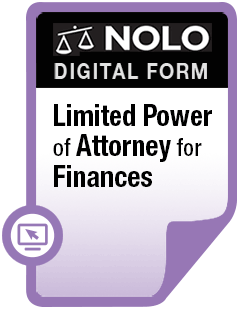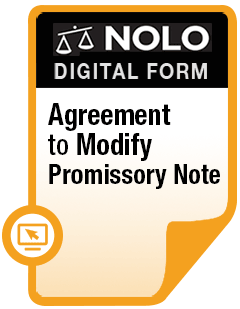What are the FDIC insurance coverage limits?
When one or more financial institutions fail, many savers begin to worry about the stability of their own bank—and what will happen to their checking, saving, and other bank accounts. Created to avoid a run on the banks, the Federal Deposit Insurance Corporation (FDIC) can provide some peace of mind if you know what it does and how to maximize the protection of your money.
Nobody can guarantee the success or longevity of a particular bank. However, the FDIC, an independent government agency, does the next best thing by insuring customers' deposits in most U.S. banks and savings associations. If an insured institution fails—in other words, closes because it can't meet its obligations—the FDIC reimburses qualified account owners dollar-for-dollar for losses, but only up to the insurance limit.
Currently, the basic FDIC insurance limit is $250,000 per depositor (account holder), per insured bank. This amount includes principal and accrued interest through the bank's closing date.
- What Is the FDIC?
- What Is Covered Under FDIC Insurance?
- What Is Not Covered Under FDIC Insurance?
- What About Credit Union Accounts?
- FDIC Insurance Coverage Limits
- How to Ensure All Money in Your Accounts Is Insured
- How to Check That All Money in Your Accounts Is Insured
- How Does the FDIC Protect You If Your Bank Fails?
- FDIC Insurance FAQs
- Get More Information
What Is the FDIC?
Congress created the Federal Deposit Insurance Corporation (FDIC) as an independent agency to maintain stability and public confidence in the United States' financial system. Here are some of the duties of the FDIC:
- It insures deposits.
- It examines and supervises financial institutions, such as banks for safety, soundness, and consumer protection.
- It makes large and complex financial institutions resolvable (meaning, they can fail and be resolved without jeopardizing the nation's financial security), as well as manages receiverships.
What Is Covered Under FDIC Insurance?
You don't have to be a citizen, a U.S. resident, or even a person to be covered by FDIC insurance. All depositors, including businesses and other entities, are eligible for coverage.
FDIC insurance covers the following types of deposit accounts established with insured institutions:
- checking
- savings
- NOW (essentially, interest-earning checking accounts)
- money market deposit accounts (MMDAs)
- certificates of deposit (CDs), and
- cashiers' checks, money orders, and other "official checks" drawn on the institution.
The easiest way to know if your bank or savings association is insured is to look for the official FDIC sign—it must be displayed at each teller window. You can also call the FDIC toll-free (877-275-3342) or use the FDIC's "Bank Find" feature to look up your bank.
What Is Not Covered Under FDIC Insurance?
The following aren't FDIC-insured, even if they are offered by an insured bank:
- mutual funds
- annuities
- life insurance policies
- stocks
- bonds
- treasury securities
- other investment products, and
- contents of a safe deposit box (though you might be covered by the bank's private insurance or your homeowner's insurance).
What About Credit Union Accounts?
Deposits in credit unions aren't covered by the FDIC. But federal credit unions are required to be members of the National Credit Union Share Insurance Fund (NCUSIF), administered by the National Credit Union Administration (NCUA). This provides deposit insurance for credit unions in much the same way as the FDIC provides insurance for banks.
Look for the NCUA logo at your credit union's teller stations. The standard maximum limit is $250,000 per individual account holder, per federally insured credit union.
FDIC Insurance Coverage Limits
Again, the basic FDIC insurance limit is $250,000 per depositor (account holder), per insured bank, and includes principal and accrued interest through the bank's closing date.
Note that coverage is calculated "per bank," not per account. That means that the insurance limits are applied to the combined balances of all accounts held by a depositor at a single bank. Not only that, but a single bank includes all of its branches and its internet division, even if it does business under a different name. Accounts held at separately chartered banks are insured separately.
How to Ensure All Money in Your Accounts Is Insured
However, it's possible to have more than $250,000 fully insured with a single bank, if your money is strategically divided among the different categories of account ownership. As long as you stay under the limit for each ownership category, you can safely keep much more than $250,000 in one bank.
The following chart shows the four most common categories of ownership with more details below.
| FDIC Insurance Coverage Limits by Account Type | |
| Single Accounts | $250,000 per owner |
| Joint Accounts | $250,000 per co-owner |
| Certain Retirement Accounts | $250,000 per owner |
| Trust Accounts (With Beneficiaries) | $250,000 per beneficiary (not to exceed $1,250,000) |
Single Accounts
These are accounts in only one person's name. All accounts owned by the same one person at the same insured bank are totaled and insured up to $250,000. For example, if you have a savings account with a $200,000 balance and a CD of $80,000, you would be uninsured for the $30,000 that exceeds the $250,000 limit.
Even in community property states, deposit accounts in either spouse's name alone are considered single accounts for FDIC insurance purposes.
Joint Accounts
These are accounts owned by two or more people. Assuming all owners have equal rights to the money in each account, each account holder's share of the joint accounts at the same insured bank are totaled and insured up to $250,000.
For example, let's say you and your spouse hold a joint checking account with a balance of $350,000, and you hold a joint checking account with your daughter that has a balance of $30,000. You would be fully covered because your half of the checking account is $175,000 and your half of the savings account is $15,000, totaling $190,000, which is still below the $250,000 limit.
Rearranging the order of names listed on joint accounts or switching between "and" and "or" on the account title doesn't qualify you for more insurance coverage.
A person's share in a joint account isn't combined with the amounts owned in single accounts to come up with a total; each account holder is entitled to $250,000 of FDIC coverage in single accounts and $250,000 FDIC coverage in joint accounts.
Self-Directed Retirement Accounts
This category includes all individual retirement accounts (IRAs), Roth IRAs, Section 457 plan accounts, self-directed defined contribution plan accounts (such as 401(k)s), and self-directed Keogh accounts owned by one person. The total balance in any one or a combination of these accounts at the same institution is insured up to $250,000.
This insurance applies only to the portion of your retirement account balance that is in bank deposits, such as CDs and money market accounts. The portion of your retirement account in mutual funds, bonds, and other investments remains uninsured, even if you purchased them through an FDIC-insured bank.
Revocable Trust Accounts
Trust accounts are treated differently. Only the interests of the beneficiaries to the trust are insured; owners of a trust account aren't insured. Generally speaking, funds are insured up to $250,000 for each beneficiary, per account owner.
So, for example, if a couple (mother and father) had $800,000 in a qualified living trust account naming two children as equal beneficiaries, the entire account balance would be fully insured. This is because each beneficiary is covered up to $500,000—$250,000 via the mom and $250,000 via the dad. With a balance of $800,000, the account does not exceed the combined limit.
Two Types of Trust Accounts
The two types of revocable trust accounts are:
- payable-on-death (POD) accounts, which allow you to name the beneficiaries on the account signature card, and
- living trusts, which are formal legal arrangements created as part of an estate plan.
Here are a few key points about trust accounts that you should be aware of:
- FDIC coverage on a trust doesn't necessarily equal $250,000 per beneficiary, per owner. For example, let's say a mother owns a trust account with a $400,000 balance. If she names both her children as beneficiaries, you might assume that the entire account balance would be insured—$200,000 per child, per owner. However, if the mother makes one child the beneficiary of 75% of the trust and the second child a beneficiary of only 25%, the child entitled to $100,000 would be fully covered, but the child entitled to $300,000 would not be covered for the $50,000 exceeding the $250,000 limit.
- In calculating the per-beneficiary insurance limit, the FDIC combines all of an owner's payable-on-death (POD) and living trust accounts at the same bank. So, for example, if a father names a child the sole beneficiary in a living trust account worth $230,000 and also names him as sole beneficiary of a POD account with a $40,000 balance, the $20,000 exceeding the $250,000 limit would be uninsured.
How to Check That All Money in Your Accounts Is Insured
To ensure you don't allow funds to be uninsured, keep a close watch on your account balances. If you exceed the insurance limit for a particular ownership category at one bank, move the excess into an account at another bank (or into some form of investment).
To determine your deposit insurance coverage or ask any other specific deposit insurance questions, call 877-ASK-FDIC (877-275-3342).
If you have a lot of money in CDs, you might have another option for protecting yourself. The Certificate of Deposit Account Registry Service allows you to make deposits with one member bank, which then spreads your money among CDs at other banks in the network.
How Does the FDIC Protect You If Your Bank Fails?
Federal law requires the FDIC to make account holders' money available "as soon as possible" after an insured institution fails. So, you could have access to your money as quickly as one day after your bank's closure. Your account might remain at your current bank, which will have been taken over by the FDIC, or it might be transferred to another FDIC-insured institution.
If your bank has failed, visit the FDIC's Failed Bank List online for important information, including the name of the acquiring bank, if there is one, and how your accounts are affected.
Account holders who have uninsured deposits could ultimately recover all or a portion of those funds as failed bank's assets are sold off, though this could take months or longer.
FDIC Insurance FAQs
Here are some FAQs covering other questions you might have about FDIC insurance.
How can I find out if my bank is covered by FDIC insurance?
You can use the Bank Find Suite website to find an institution by name and location or call 877-ASK-FDIC (877-275-3342) to see if your bank or savings association is insured by the FDIC. Be aware that deposits in separate branches of an insured bank aren't separately insured. Also, FDIC-insured depository institutions are required to display an official FDIC sign at each teller window or teller station.
What if I have separate accounts at different banks that have FDIC coverage?
If you have a deposit insured at one bank, it is insured separately from a deposit you have at another insured bank.
What types of accounts are eligible for FDIC insurance?
Again, FDIC insurance covers checking accounts, Negotiable Order of Withdrawal (NOW) accounts, savings accounts, money market deposit accounts (MMDAs), and certificates of deposit (CDs) up to the insurance limit. However, money you invest in stocks, bonds, mutual funds, crypto assets, life insurance policies, annuities, or municipal securities aren't insured, even if you buy them from an insured institution.
How does the FDIC protect my money if my bank fails?
FDIC insurance protects depositors against the failure of an insured bank by covering the balance of each depositor's account (dollar-for-dollar) up to the insurance limit. However, if you have losses due to theft or fraud, other laws come into play.
Get More Information
Learn more about FDIC insurance online. If you have further questions, contact the FDIC directly at 877-ASK-FDIC (877-275-3342/TDD: 800-925-4618).
Talk to a Lawyer
Need a lawyer? Start here.
How it Works
- Briefly tell us about your case
- Provide your contact information
- Choose attorneys to contact you
- What Is the FDIC?
- What Is Covered Under FDIC Insurance?
- What Is Not Covered Under FDIC Insurance?
- What About Credit Union Accounts?
- FDIC Insurance Coverage Limits
- How to Ensure All Money in Your Accounts Is Insured
- How to Check That All Money in Your Accounts Is Insured
- How Does the FDIC Protect You If Your Bank Fails?
- FDIC Insurance FAQs
- Get More Information
- Briefly tell us about your case
- Provide your contact information
- Choose attorneys to contact you



